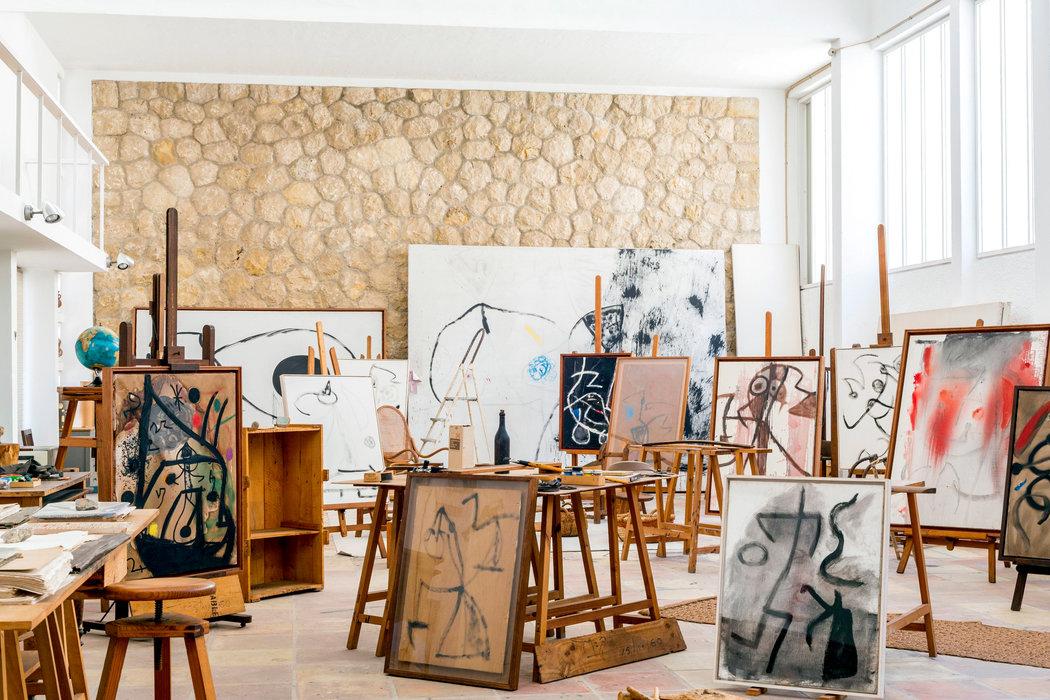Text source: Mayoral
'Including 25 paintings and drawings by the artist and bringing together a wealth of historical and archive material, Miró’s studio presents an immersive environment evoking the poetic universe of the artist’s atelier. Complete with furniture, painting materials and household items, the recreation offers visitors real insight into the everyday working life of the leading avant-garde painter.
The Majorca studio was hugely influential and integral to Miró’s creative output, as Joan Punyet Miró, the artist’s grandson, explains: “The Studio offered Miró a suitable working environment. When he closed the door behind him he knew he was cutting all contact with the outside world and entering into his imaginary universe. This imaginary space, his reality, was arranged upon a background of Mediterranean light, colours and shapes…”. Having lived in different locations in Europe throughout his life, often in different places at the same time in Paris and Spain, he finally settled in Majorca in 1956, where he had taken his family during the Second World War. The studio in Majorca became a refuge for Miró and he would work, unrelentingly, from the Majorca studio for over quarter of a century, until his death in 1983.
Founded sixty years ago in 1956, the studio was designed by Miró’s close friend the well-known Catalan architect Josep Lluís Sert, who would design the Miró Foundation in Barcelona twenty years later in 1976. Working from exile in New York, Sert corresponded with Miró on the design of the workshop through a series of letters. These important documents are included in a second space of the exhibition, where visitors can learn more about the extraordinary artistic output of the studio through archive imagery and the personal effects of the artist.'







